- Administrator
- Albums and Singles
 The Poppy Variations is the ill-natured twin of The Whispering Wall — the qlippothic, mirror-universe reflection, residing in the shadowy nightside of Eden. Where Whispering is right in line with LPD's current manifestation and evolution, Poppy is entirely regressive and even transgressive. Where Whispering is often joyful and musically rich, Poppyis spare, prickly and pessimistic. Rather than a series of inviting,accessible compositions, LPD creates a series of perverse spectralenigmas, even utilizing samples and reworkings of their older material,in some attempt at painstaking self-reflection and exegesis. EdwardKa-Spel's lyrics aren't as bemused and detached as usual here, instead,on many of the tracks, he sounds downright miserable, displaying thekind of perplexed mental fragmentation familiar from early Dotsmaterial like Asylum. Long sections of near-silence andpassages exhibiting the kind of wildly unorthodox experimentation notheard since the Steven Stapleton-produced Malachai: Shadow Weaver part 2make this album one of LPD's most difficult propositions in recentmemory. It's a schizophrenic experience attempting to place this albumin context with The Whispering Wall; best, then, to evaluate iton its own merits. Which are many, especially for diehard fans of earlyDots (read: freaks of nature) - the jagged, minimal electronics andKa-Spel's piercing graveyard whine, staccato drum machine rhythms,bizarre samples, loops and low-budget psychedelic touches thatcontribute to an air of drugged-out bedroom insanity. The hazy, summerbuzz of "Krussoe" shifts and festers in the background, as Ka-Spelmutters: "All I have is sand, a withered hand, a pile of cans, they'rerusting." More nautical metaphors (see Ka-Spel's Pieces of 8),this time the bedraggled literary castaway wishing for a ship to comeand take him away from his tropical hell. Even the song names on The Poppy Variationsseem to echo the album's dire outlook: "Personal Monster" and "ItDoesn't Matter Anway," a pair of songs that echo early Dots melodies,minimal treatments, up-close vocals explicating the most dreadfulfuturistic angst. "L'oiseau Rare (Pt. 1 & 2)" begins with wackyjungle-drums and bouncing vocals familiar from "Crumbs on the Carpet,"but it quickly segues into a lengthy excursion through enigmaticunfoldings of ambient meandering, lost in a vast interplanetary garbagescow at night. It's as frightening, haunted and lonely as The Tower or parts of Crushed Velvet Apocalypse.An Orson Welles-ish radio drama voice slips out of the aethyr on "TheHot Breath on Your Neck," creepily intoning:"It...is...later...than...you...think....," to which a resigned Ka-Spelreplies: "I know, you don't have to rub it in, do you?" Ouch. Thingsend on a note of spectacularly epic melancholy, with the two-part,25-minute picaresque musical patchwork of the title track, which usesthe classic track "Poppy Day" as a jumping off point for a lengthymeditation on depression and addiction. I've never felt so far awaylistening to music on my headphones, the track traveling through mentalcorridors, collecting faded memories and obsessed spirits, ultimatelyexploding into a massive and sinister soundscape of disembodied voices,radioactive swipes of brain-frying sound, cold metallic insectoidtextures and distant, reverberating funereal choruses of bagpipes. Inits own twisted, cadaverous way, The Poppy Variations is an even finer accomplishment than The Whispering Wall, a spooked missive from deep in the heart of the abyss.
The Poppy Variations is the ill-natured twin of The Whispering Wall — the qlippothic, mirror-universe reflection, residing in the shadowy nightside of Eden. Where Whispering is right in line with LPD's current manifestation and evolution, Poppy is entirely regressive and even transgressive. Where Whispering is often joyful and musically rich, Poppyis spare, prickly and pessimistic. Rather than a series of inviting,accessible compositions, LPD creates a series of perverse spectralenigmas, even utilizing samples and reworkings of their older material,in some attempt at painstaking self-reflection and exegesis. EdwardKa-Spel's lyrics aren't as bemused and detached as usual here, instead,on many of the tracks, he sounds downright miserable, displaying thekind of perplexed mental fragmentation familiar from early Dotsmaterial like Asylum. Long sections of near-silence andpassages exhibiting the kind of wildly unorthodox experimentation notheard since the Steven Stapleton-produced Malachai: Shadow Weaver part 2make this album one of LPD's most difficult propositions in recentmemory. It's a schizophrenic experience attempting to place this albumin context with The Whispering Wall; best, then, to evaluate iton its own merits. Which are many, especially for diehard fans of earlyDots (read: freaks of nature) - the jagged, minimal electronics andKa-Spel's piercing graveyard whine, staccato drum machine rhythms,bizarre samples, loops and low-budget psychedelic touches thatcontribute to an air of drugged-out bedroom insanity. The hazy, summerbuzz of "Krussoe" shifts and festers in the background, as Ka-Spelmutters: "All I have is sand, a withered hand, a pile of cans, they'rerusting." More nautical metaphors (see Ka-Spel's Pieces of 8),this time the bedraggled literary castaway wishing for a ship to comeand take him away from his tropical hell. Even the song names on The Poppy Variationsseem to echo the album's dire outlook: "Personal Monster" and "ItDoesn't Matter Anway," a pair of songs that echo early Dots melodies,minimal treatments, up-close vocals explicating the most dreadfulfuturistic angst. "L'oiseau Rare (Pt. 1 & 2)" begins with wackyjungle-drums and bouncing vocals familiar from "Crumbs on the Carpet,"but it quickly segues into a lengthy excursion through enigmaticunfoldings of ambient meandering, lost in a vast interplanetary garbagescow at night. It's as frightening, haunted and lonely as The Tower or parts of Crushed Velvet Apocalypse.An Orson Welles-ish radio drama voice slips out of the aethyr on "TheHot Breath on Your Neck," creepily intoning:"It...is...later...than...you...think....," to which a resigned Ka-Spelreplies: "I know, you don't have to rub it in, do you?" Ouch. Thingsend on a note of spectacularly epic melancholy, with the two-part,25-minute picaresque musical patchwork of the title track, which usesthe classic track "Poppy Day" as a jumping off point for a lengthymeditation on depression and addiction. I've never felt so far awaylistening to music on my headphones, the track traveling through mentalcorridors, collecting faded memories and obsessed spirits, ultimatelyexploding into a massive and sinister soundscape of disembodied voices,radioactive swipes of brain-frying sound, cold metallic insectoidtextures and distant, reverberating funereal choruses of bagpipes. Inits own twisted, cadaverous way, The Poppy Variations is an even finer accomplishment than The Whispering Wall, a spooked missive from deep in the heart of the abyss.samples:
Read More
- Administrator
- Albums and Singles
 Pieces of 8 is the latest bookend to the long shelf filled with China Dolls too numerous to count, the holy books of Illumina, Lilith and Tanith, the Heartbreak, the Needles and the colors: Blue Room, Red Letters and Graye Skreeens. A vague continuation of the nautical, "soul set adrift at sea" themes explored on 2001's rambling, unfocused O'er a Shalabast'r Tyde Strolt Ay, the new album is — true to its title — an embarrassment of riches, a sunken treasure chest of pirate's booty. Pieces of 8is an amazingly well-crafted concept album of remarkable strength andfocus from an artist who would have every right to be well past hisartistic prime. Over the years, we've learned how to listen to EdwardKa-Spel's solo albums: the well-worn sonic palette, the familiararsenal of metaphors and lyrical themes. Ka-Spel's career as a soloartists is virtually predicated on its unfaltering uniformity,constantly retracing its own lines, deepening the grooves of an etchinglong since completed. Those who love Ka-Spel's music know to listen forthose tiny nuances, the changes in perspective, the recycling andre-contextualization of familiar lyrical conceits. Hence, there issomething of a learning curve for this music, an "EKS literacy" that isnurtured over time by repetitive exposure. What's amazing about Pieces of 8is that it may be Edward's first album that peeks its out of thatendlessly self-referential universe of bedroom electronics, crepuscularpsychedelia and microcosmic dread. Musically, it's one of the bestalbums EKS has ever crafted, consisting of several solid songwritingefforts balanced perfectly with evocative sound-effects suites andpassages of pure electronic ambience. Ka-Spel's trademark gallows humoris fully intact, explicating his constant themes of personal anduniversal apocalypse, and the existential dread experienced in a worldof human emotions increasingly mediated by technology. Opening with awhimsical sea-shanty that evokes some pre-war street accordionistplaying in a French harbor town, "The Writing on the Wall" inexplicablytransforms into a haunting piano dirge littered with atmosphericsamples. As ever, Edward is a storyteller, his lyrics spinning a yarnof a doomed man forced to walk the plank who, paradoxically, seemsendlessly amused by his fate. "Here Comes the Night" is a lengthy,sprawling ambient piece that follows the more abstract moments of Dark Side of the Moonto their logical conclusion: a majestic space-scape haunted by fragilepiano melodies and the ghostly transmissions of long-abandoneddeep-space probes. The blasted, distorted electro groove of "Comedown"is punctuated by handclaps and noisy throbs, Edward's spiralling vocalsevoking the terrors of infancy, pausing briefly to reference DavidLynch's Eraserhead. "Alms for Lepers" is more standard EKSfare: melancholic vocals filled with linguistic puns and odd metaphors,against a backdrop of spectral keyboards and deliberately syntheticdrum programming. The lengthy final track is a meticulouslyconstructed, multi-layered kosmische symphony of cyclical electronicpulses that build in hallucinogenic intensity before giving way to ascratchy, warbling old 78 spinning out fractured, kaleidescopicnostalgia which bobs out over the whitecaps and disappears from view.
Pieces of 8 is the latest bookend to the long shelf filled with China Dolls too numerous to count, the holy books of Illumina, Lilith and Tanith, the Heartbreak, the Needles and the colors: Blue Room, Red Letters and Graye Skreeens. A vague continuation of the nautical, "soul set adrift at sea" themes explored on 2001's rambling, unfocused O'er a Shalabast'r Tyde Strolt Ay, the new album is — true to its title — an embarrassment of riches, a sunken treasure chest of pirate's booty. Pieces of 8is an amazingly well-crafted concept album of remarkable strength andfocus from an artist who would have every right to be well past hisartistic prime. Over the years, we've learned how to listen to EdwardKa-Spel's solo albums: the well-worn sonic palette, the familiararsenal of metaphors and lyrical themes. Ka-Spel's career as a soloartists is virtually predicated on its unfaltering uniformity,constantly retracing its own lines, deepening the grooves of an etchinglong since completed. Those who love Ka-Spel's music know to listen forthose tiny nuances, the changes in perspective, the recycling andre-contextualization of familiar lyrical conceits. Hence, there issomething of a learning curve for this music, an "EKS literacy" that isnurtured over time by repetitive exposure. What's amazing about Pieces of 8is that it may be Edward's first album that peeks its out of thatendlessly self-referential universe of bedroom electronics, crepuscularpsychedelia and microcosmic dread. Musically, it's one of the bestalbums EKS has ever crafted, consisting of several solid songwritingefforts balanced perfectly with evocative sound-effects suites andpassages of pure electronic ambience. Ka-Spel's trademark gallows humoris fully intact, explicating his constant themes of personal anduniversal apocalypse, and the existential dread experienced in a worldof human emotions increasingly mediated by technology. Opening with awhimsical sea-shanty that evokes some pre-war street accordionistplaying in a French harbor town, "The Writing on the Wall" inexplicablytransforms into a haunting piano dirge littered with atmosphericsamples. As ever, Edward is a storyteller, his lyrics spinning a yarnof a doomed man forced to walk the plank who, paradoxically, seemsendlessly amused by his fate. "Here Comes the Night" is a lengthy,sprawling ambient piece that follows the more abstract moments of Dark Side of the Moonto their logical conclusion: a majestic space-scape haunted by fragilepiano melodies and the ghostly transmissions of long-abandoneddeep-space probes. The blasted, distorted electro groove of "Comedown"is punctuated by handclaps and noisy throbs, Edward's spiralling vocalsevoking the terrors of infancy, pausing briefly to reference DavidLynch's Eraserhead. "Alms for Lepers" is more standard EKSfare: melancholic vocals filled with linguistic puns and odd metaphors,against a backdrop of spectral keyboards and deliberately syntheticdrum programming. The lengthy final track is a meticulouslyconstructed, multi-layered kosmische symphony of cyclical electronicpulses that build in hallucinogenic intensity before giving way to ascratchy, warbling old 78 spinning out fractured, kaleidescopicnostalgia which bobs out over the whitecaps and disappears from view.samples:
Read More
- Administrator
- Albums and Singles
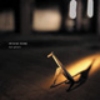 Whilerecording his second full-length, Kleine felt inspired to createseemingly with whatever he found lying about, and it has reinformed hismusic in a whole new light. The simple beauty of his other works ishere still, but augmented by a new dancefloor sensibility, and thestrength and assurance of years behind the boards and with aninstrument in hand. From the first song, "Home," the energy can befelt, as the album starts off with gentle keys and sounds beforeexploding into full boogie shuffle. The beats are never stale, soundinglike they were created from the ground up instead of from samples, andthe density of the sound is undeniable, with new sounds popping upevery time I listen; and that's just the first track. From there, it'son to the almost indie rock presence of "Stations," where the guitarand drums are joined by an otherworldly ringing and keyboards. Kleinecomplicates things more and more as the album progresses, getting moreand more creative with the rhythms and the tones he lays on top.Contrasting that is the all-out rock nature of songs like"Ghostwriting," that reinvigorate more than new rock bands could everhope to. Kleine took eighteen months to finish the record, and theeffort shows in the production, even though there is no real congruityto the songs as a whole. Maybe that's planned, or maybe that's just howit came out, but it's not a detractor: each song is a different storyor ghost and exists just fine on its own, lasting just as long or shortas it needs to. Real Ghosts is a tribute to Kleine's influencesand a reaction to the music of his past all at once, and as such it isthe boldest musical statement he's ever made.
Whilerecording his second full-length, Kleine felt inspired to createseemingly with whatever he found lying about, and it has reinformed hismusic in a whole new light. The simple beauty of his other works ishere still, but augmented by a new dancefloor sensibility, and thestrength and assurance of years behind the boards and with aninstrument in hand. From the first song, "Home," the energy can befelt, as the album starts off with gentle keys and sounds beforeexploding into full boogie shuffle. The beats are never stale, soundinglike they were created from the ground up instead of from samples, andthe density of the sound is undeniable, with new sounds popping upevery time I listen; and that's just the first track. From there, it'son to the almost indie rock presence of "Stations," where the guitarand drums are joined by an otherworldly ringing and keyboards. Kleinecomplicates things more and more as the album progresses, getting moreand more creative with the rhythms and the tones he lays on top.Contrasting that is the all-out rock nature of songs like"Ghostwriting," that reinvigorate more than new rock bands could everhope to. Kleine took eighteen months to finish the record, and theeffort shows in the production, even though there is no real congruityto the songs as a whole. Maybe that's planned, or maybe that's just howit came out, but it's not a detractor: each song is a different storyor ghost and exists just fine on its own, lasting just as long or shortas it needs to. Real Ghosts is a tribute to Kleine's influencesand a reaction to the music of his past all at once, and as such it isthe boldest musical statement he's ever made.samples:
Read More
- Administrator
- Albums and Singles
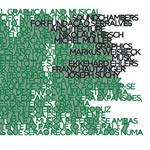 This is Staubgold's second architecturally-oriented release, the first being To Rococo Rot's Kolner Brett, a disc which set about creating a kind of audio simulation of Cologne's Kolner Brett building, situating tracks within a quasi-geometric framework and streamlining the group's austere sound into a series of registers meant to represent different parts of the biulding. Soundchambers is different, more of a commemoration or a traditional response piece than To Rococo's stylized production.
This is Staubgold's second architecturally-oriented release, the first being To Rococo Rot's Kolner Brett, a disc which set about creating a kind of audio simulation of Cologne's Kolner Brett building, situating tracks within a quasi-geometric framework and streamlining the group's austere sound into a series of registers meant to represent different parts of the biulding. Soundchambers is different, more of a commemoration or a traditional response piece than To Rococo's stylized production.
The three seasoned Viennese and German musicians teamed up at the opening of the Museu Serralves in Porto, Portugal for a ceremonial live improvisation, Suchy with processed guitar and laptop, Hautzinger with his trumpet, and Ehlers manipulating piano samples and machine noise via computer. The result feels markedly less site specific than Kolner Brett, with a spaciousness that could be associated with Serralves' sprawling gardens, but feels almost at odds with the building's "chambered" construction.
I've listened to the disc in a number of different spaces trying to gauge the closest approximation, and so far it feels most appropriate in transit, speeding over trainyards on the subway or strolling a city block flanked by walls of glass. Hautzinger's trumpet, with its characteristic breathy flights and hesitant abbreviations, would seem the perfect companion to the microsound noodling of the two computer musicians, yet he delivers a refreshingly lyrical, linear performance for most of Soundchambers. His lush and expansive lines drift through and bisect Ehlers' and Suchy's abstractions like a street musician's horn through the city's mess, warping the mood to make every crushing noise a miniature buttress for the fragile howl of one man's breath.
The computerists do not work against their protagonist, rather covering his lesser moments with warm piano tinker or swirls of guitar that keep the mood buoyant and coolly triumphant. The musicians practice a treacherous kind of hesitant, near-impressionistic playing, drifting across subtle movements and phrases with the threat of dissolution ever-present, especially given the amount of swift processing required to transform so much brushed guitar or industrial noise (Ehlers sourced sound in the heating rooms of Stuttgart) into such coherent, immediate swells. The severe geometry of Serralves, as indicated in the sleeve's graphic component, feels far enough removed from Soundchambers' tenuous construction for me to question whether experiencing the building would be at all emotionally consistent with the music. Luckily, a finer appreciation of the architecture's genesis or deeper implications is not required to fully engage with this beautiful recording.
samples:
Read More
- Administrator
- Albums and Singles
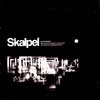 Ninja Tune has strayed away from the things that worked for it ahandful of years ago and as such, it hasn't been a label I've followedmuch since the heyday of Dj Vadim and Amon Tobin. Their new signing isa Polish act called Skalpel whose name conjures much more dire imagesthan their music, but works as a reference to the idea of surgicallycutting records together. Taking samples and bits from Polish jazzrecords and recombining them into new tracks, Skalpel do what so manyhave done before them, but with an amazing amount of precision andcare. The songs on their self-titled debut are mostly laid-back, mutedarrangements of horns and upright bass flowing effortlessly over funkydrums and the occassional hint of exotica. Polish Jazz records from the60's and 70's make up the bulk if not all of the source material,giving the album a steady, cohesive sound that rarely changes timbresenough to alert the listener that the record is made up of samples.Upon first listen, it all sounded a little too familiar as others likeKruder & Dorfmeister have travelled similar roads before. However,Skalpel bring a level of refined sophistication to the game that makesthe album something worth putting on again and again. Loops don't justrepeat here, they are changed and arranged organically so thateverything has the feel of a live band playing over some vinyl surfacenoise. The cheeky samples about dancing all night to jazz and playingPolish records are to be expected, but those are the only signs thatthis music is a conscious decendant of the jazz-record pillaging scene.The rest of the record plays as an homage to martinis and the dapperyoung people who drink them, and to the wonderful history of Polishjazz of which most people who hear this record will have noforeknowledge. While it's not a groundbreaking technical achievement,the production is seamless and ultra-smooth making this a perfectchill-out record or post-modern bachelor pad soundtrack. The disc alsoincludes three short films arranged to tracks on the album that helpround out the presentation. Their stark black and white imageryflickers and reminds me of hep cats in tuxedos and of the fondfalse-nostalgia for a bygone time that afflicts those of us who werenever alive to experience the things we see only in pre-color images.
Ninja Tune has strayed away from the things that worked for it ahandful of years ago and as such, it hasn't been a label I've followedmuch since the heyday of Dj Vadim and Amon Tobin. Their new signing isa Polish act called Skalpel whose name conjures much more dire imagesthan their music, but works as a reference to the idea of surgicallycutting records together. Taking samples and bits from Polish jazzrecords and recombining them into new tracks, Skalpel do what so manyhave done before them, but with an amazing amount of precision andcare. The songs on their self-titled debut are mostly laid-back, mutedarrangements of horns and upright bass flowing effortlessly over funkydrums and the occassional hint of exotica. Polish Jazz records from the60's and 70's make up the bulk if not all of the source material,giving the album a steady, cohesive sound that rarely changes timbresenough to alert the listener that the record is made up of samples.Upon first listen, it all sounded a little too familiar as others likeKruder & Dorfmeister have travelled similar roads before. However,Skalpel bring a level of refined sophistication to the game that makesthe album something worth putting on again and again. Loops don't justrepeat here, they are changed and arranged organically so thateverything has the feel of a live band playing over some vinyl surfacenoise. The cheeky samples about dancing all night to jazz and playingPolish records are to be expected, but those are the only signs thatthis music is a conscious decendant of the jazz-record pillaging scene.The rest of the record plays as an homage to martinis and the dapperyoung people who drink them, and to the wonderful history of Polishjazz of which most people who hear this record will have noforeknowledge. While it's not a groundbreaking technical achievement,the production is seamless and ultra-smooth making this a perfectchill-out record or post-modern bachelor pad soundtrack. The disc alsoincludes three short films arranged to tracks on the album that helpround out the presentation. Their stark black and white imageryflickers and reminds me of hep cats in tuxedos and of the fondfalse-nostalgia for a bygone time that afflicts those of us who werenever alive to experience the things we see only in pre-color images.samples:
Read More
- Administrator
- Albums and Singles
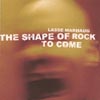 The press release calls it an assembled "history of extreme music,"covering death and black metals, free jazz, VU/Swans guitar walls, andthe power electronics spectrum. And while the cheeky title reiteratesMarhaug's impossible ambitions, it issafe to say that this disc represents one of the Norweigennoisemaster's most unrelenting works yet. As half of Jazzkammer and afrequent collaborator with noisemakers from across the globe, Marhaughas affixed his stamp of curdled feedback and precise digital doctoringto the range of experimental musics, from Jazzkammer's irreduciblepinprick landscapes to Maja Ratkje's operatic abstractions and on intothe dark densities of Merzbow and Kevin Drumm. The work of the lattertwo is where The Shape of Rock finds closest comparison.Consistent with his recent live shows, Marhaug explores the limits ofguitar feedback here, forcing shards of low-end click and hum throughrows of screeching effects and into the computer where things arereassembled into grainy staccato pulsings and writhing pools of sludge.Titles like "Sleeper" and "Magmadiver" point to the legacy of Norway'sblack metal scene; however, as far as audible similarity is concerned,other examples of electronic music paying homage to metal (like COH's Iron or any of Drumm's recent releases) come closer. For all of its excess, The Shape of Rockhangs onto a certain amount of the crisp, cool atmosphere thatcharacterizes much of the artist's work and begs to be associated withhis Nordic roots. Rather than peaking with dramatic transitions intorandom, deconstructive meltdown, the tracks climax with effectiveregroupings, organizing into thick laths of sound more likely toconjure images of looming, night-lit skyscrapers than Gothic ruins.Marhaug often exploits the digital foundation of each piece by guidingthe bulk of certain tracks into stuttering 'skip' patterns, a techniquethat works with the science fiction feel of the disc. Overall this is asolid addition to the catalog of one of Norway's most prolific andsuccessful noisemen; it is also one of his surprisingly few soloreleases, as good an entry point as any.
The press release calls it an assembled "history of extreme music,"covering death and black metals, free jazz, VU/Swans guitar walls, andthe power electronics spectrum. And while the cheeky title reiteratesMarhaug's impossible ambitions, it issafe to say that this disc represents one of the Norweigennoisemaster's most unrelenting works yet. As half of Jazzkammer and afrequent collaborator with noisemakers from across the globe, Marhaughas affixed his stamp of curdled feedback and precise digital doctoringto the range of experimental musics, from Jazzkammer's irreduciblepinprick landscapes to Maja Ratkje's operatic abstractions and on intothe dark densities of Merzbow and Kevin Drumm. The work of the lattertwo is where The Shape of Rock finds closest comparison.Consistent with his recent live shows, Marhaug explores the limits ofguitar feedback here, forcing shards of low-end click and hum throughrows of screeching effects and into the computer where things arereassembled into grainy staccato pulsings and writhing pools of sludge.Titles like "Sleeper" and "Magmadiver" point to the legacy of Norway'sblack metal scene; however, as far as audible similarity is concerned,other examples of electronic music paying homage to metal (like COH's Iron or any of Drumm's recent releases) come closer. For all of its excess, The Shape of Rockhangs onto a certain amount of the crisp, cool atmosphere thatcharacterizes much of the artist's work and begs to be associated withhis Nordic roots. Rather than peaking with dramatic transitions intorandom, deconstructive meltdown, the tracks climax with effectiveregroupings, organizing into thick laths of sound more likely toconjure images of looming, night-lit skyscrapers than Gothic ruins.Marhaug often exploits the digital foundation of each piece by guidingthe bulk of certain tracks into stuttering 'skip' patterns, a techniquethat works with the science fiction feel of the disc. Overall this is asolid addition to the catalog of one of Norway's most prolific andsuccessful noisemen; it is also one of his surprisingly few soloreleases, as good an entry point as any.samples:
Read More
- Administrator
- Albums and Singles
 Piehead's third offering this year comes from the melodic electronicsolo act, Portland. Those familiar with the pioneering n5md label willprobably recognize the name, if not the sound of Portland, and that'slikely because Portland offers little to call his own on Uprox Detox. While the album charts a path through melancholic, beat-oriented IDM (a label used specifically to illicit memories of Artifical Intelligencecompilations and those who love them) with minor key synth tones andclicky, punchy drums, it ultimately plays as a tribute to those whohave gone before. Every moment of Uprox Detox is predictable,just as every sound coaxed out of the computer has been coaxed outbefore. Portland's pedigree lies firmly in the Warp/Skam family tree,and while this album is a worthwhile addition to a catalog of musicthat follows a certain set of rules, it never strays from those rules.These may not be preset drum and synth patches, but they might as wellbe, as most songs sound as though Portland has called up the "EarlyAutechre Kit" on some softsynth in order to compose. The songs arelikeable, genuinely nice in fact, but they aren't poised to startle orupset anyone, and that seems to be my biggest complaint. When thisstrain of IDM's progenitors took a staid techno formula and fucked withit to build something new, it was a little bit shocking, daring, andweird. Now, those same production tricks are nothing more than ashorthand for the kind of music that is characterized by blocky,condensed Helvetica typography and technologically-minded alternatespelling. Portland has rendered a polite and polished album here, butone that never quite cuts loose the way I wish it would. Uprox Detoxis a fine addition to a collection of otherwise ambiguous records, butI hope that next time he colors more outside of the lines.
Piehead's third offering this year comes from the melodic electronicsolo act, Portland. Those familiar with the pioneering n5md label willprobably recognize the name, if not the sound of Portland, and that'slikely because Portland offers little to call his own on Uprox Detox. While the album charts a path through melancholic, beat-oriented IDM (a label used specifically to illicit memories of Artifical Intelligencecompilations and those who love them) with minor key synth tones andclicky, punchy drums, it ultimately plays as a tribute to those whohave gone before. Every moment of Uprox Detox is predictable,just as every sound coaxed out of the computer has been coaxed outbefore. Portland's pedigree lies firmly in the Warp/Skam family tree,and while this album is a worthwhile addition to a catalog of musicthat follows a certain set of rules, it never strays from those rules.These may not be preset drum and synth patches, but they might as wellbe, as most songs sound as though Portland has called up the "EarlyAutechre Kit" on some softsynth in order to compose. The songs arelikeable, genuinely nice in fact, but they aren't poised to startle orupset anyone, and that seems to be my biggest complaint. When thisstrain of IDM's progenitors took a staid techno formula and fucked withit to build something new, it was a little bit shocking, daring, andweird. Now, those same production tricks are nothing more than ashorthand for the kind of music that is characterized by blocky,condensed Helvetica typography and technologically-minded alternatespelling. Portland has rendered a polite and polished album here, butone that never quite cuts loose the way I wish it would. Uprox Detoxis a fine addition to a collection of otherwise ambiguous records, butI hope that next time he colors more outside of the lines.samples:
Read More
- Administrator
- Albums and Singles
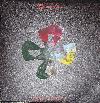 With the Drum MachineEP, the inimitable Peat Bog and the irrepressible Beta-Lactam RingRecords proffer three tracks and twenty-three additional minutes ofmolten mind expansion designed to sink even further into the murky,neo-primitive quagmire first experienced on Earthmonkey'sStapleton-produced debut. Only this time, Mr. Bog has upped the anteand reinvented himself, fully engaging the techno-Prog tendencies onlyglimpsed in his previous work. For better or worse (though certainlyfor the better), Drum Machine sounds like the overfed bastard offspring of The Orb's Adventure Beyond the Ultraworld and Coil's Love's Secret Domain being sexually molested by the Ozric Tentacles' Strangeitude. Where the debut had the stomping Neolithic beats and fuzzy riffage of some mid-70's Kraut-Prog castoff, Drum Machineunashamedly explores the connection between Kraan and The KLF; acid andecstasy; peyote visions and Bedouin trance. "Varana Swing" createsdense, subterranean tunnels connecting Ibiza to the darkest heartAfrica, full of cyclical tribalisms, layers of resonating synthesizersand queasy, dislocated sound effects that creep across the stereochannels. "Hanumantra," in addition to invoking the Be Here Nowimperatives of Baba Ram Dass, also sports a lovely zero-gravity guitarmelody that paints a backdrop for tranced-out group chanting and wavesof mutated cosmic debris. The track inhabits a similar post-Industrialspace-rock territory familiar from mid-to-late period Pink Dots. "BeThat Charge" is certainly the most unorthodox song that Earthmonkey hasyet devised: a whirling dervish of hardcore punk and Middle Easterndance music; The Stooges and a sect of Merkabian desert mystics meetingunder the Saharan moonlight for an all-nighter of hashish-addledslam-dancing. Although it references ethic musics, Earthmonkey's soundis unbounded by its location in spacetime, thrillinglyextra-geographical, suggestive of a world community of switched-onheads stretching from the parched American neo-tribal desert ofBurningman back to the musical primalisms of pre-Babylonian man.
With the Drum MachineEP, the inimitable Peat Bog and the irrepressible Beta-Lactam RingRecords proffer three tracks and twenty-three additional minutes ofmolten mind expansion designed to sink even further into the murky,neo-primitive quagmire first experienced on Earthmonkey'sStapleton-produced debut. Only this time, Mr. Bog has upped the anteand reinvented himself, fully engaging the techno-Prog tendencies onlyglimpsed in his previous work. For better or worse (though certainlyfor the better), Drum Machine sounds like the overfed bastard offspring of The Orb's Adventure Beyond the Ultraworld and Coil's Love's Secret Domain being sexually molested by the Ozric Tentacles' Strangeitude. Where the debut had the stomping Neolithic beats and fuzzy riffage of some mid-70's Kraut-Prog castoff, Drum Machineunashamedly explores the connection between Kraan and The KLF; acid andecstasy; peyote visions and Bedouin trance. "Varana Swing" createsdense, subterranean tunnels connecting Ibiza to the darkest heartAfrica, full of cyclical tribalisms, layers of resonating synthesizersand queasy, dislocated sound effects that creep across the stereochannels. "Hanumantra," in addition to invoking the Be Here Nowimperatives of Baba Ram Dass, also sports a lovely zero-gravity guitarmelody that paints a backdrop for tranced-out group chanting and wavesof mutated cosmic debris. The track inhabits a similar post-Industrialspace-rock territory familiar from mid-to-late period Pink Dots. "BeThat Charge" is certainly the most unorthodox song that Earthmonkey hasyet devised: a whirling dervish of hardcore punk and Middle Easterndance music; The Stooges and a sect of Merkabian desert mystics meetingunder the Saharan moonlight for an all-nighter of hashish-addledslam-dancing. Although it references ethic musics, Earthmonkey's soundis unbounded by its location in spacetime, thrillinglyextra-geographical, suggestive of a world community of switched-onheads stretching from the parched American neo-tribal desert ofBurningman back to the musical primalisms of pre-Babylonian man. Read More
- Administrator
- Albums and Singles
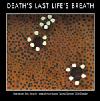 For the mere pittance of $4.00, Beta-Lactam Ring Records is offering the latest in its Beta-Beat Samplerseries. Where previous volumes were quick-and-dirty, minimally packagedreleases compiling and excerpting new and upcoming music on the label, Death's Last Life's Breathcomes in a printed sleeve, and includes a brand new Nurse With Woundtrack exclusive to this compilation. And it's no mere fragmentaryouttake meant to entice the unwary consumer, but an epic 15-minutefantasia of unhinged Stapletonian whimsy. "A Wasted Life of PhagocyteFoot Fetishism" plays like an extended, free-associating riff on theSpace Age Bachelor Pad music for which Stapleton has always professedhis affection. The track goes everywhere, of course, from a concerthall full of toy xylophones to sudden explosions of tabla rhythms,eventually floating up to a dense cloud bank of gently shimmeringkeyboards. If this were the only worthwhile track on Death's Last Life's Breath,it would still be more than worth the price of admission. Luckily, therest of the nearly 80-minute disc is chock full of the kind ofear-opening sonic exploration I've come to expect from the Beta-Lactamlabel, from the lysergic folk of Japan's Green Milk From the PlanetOrange to the eclectic, post-Prog collages of art-rock legends La STPO.Whitelodge's "Masters Within Spaces," excerpted from theirsoon-to-be-released debut, adds a level of post-rock sophistication tothe melancholic, apocalyptic themes explored by esoteric mainstaysCurrent 93 and Death in June. Judging by the distortion-blasted electrogroove of "Comedown," Edward Ka-Spel's new Pieces of 8 promisesto be his best in years. Matt Waldron's irr.app.(ext.) projectcontinues to find new non-corporeal identities in the labyrinthineinner workings of memory and synchronicity, on full display in a trulyunsettling excerpt from the forthcoming Perekluchenie album.Beequeen's "I'm Searching For Field Character" is a perfectlymysterious concoction of drones, dialogue samples and all manner ofindescribable textures. It came down to two choices this week: feed andclothe my Somalian sponsor kid for another month, or use my loosepocket change to buy Death's Last Life's Breath. Sorry about the lack of clean drinking water, N'Dugu, but I'll be happy to burn you a copy of this CD.
For the mere pittance of $4.00, Beta-Lactam Ring Records is offering the latest in its Beta-Beat Samplerseries. Where previous volumes were quick-and-dirty, minimally packagedreleases compiling and excerpting new and upcoming music on the label, Death's Last Life's Breathcomes in a printed sleeve, and includes a brand new Nurse With Woundtrack exclusive to this compilation. And it's no mere fragmentaryouttake meant to entice the unwary consumer, but an epic 15-minutefantasia of unhinged Stapletonian whimsy. "A Wasted Life of PhagocyteFoot Fetishism" plays like an extended, free-associating riff on theSpace Age Bachelor Pad music for which Stapleton has always professedhis affection. The track goes everywhere, of course, from a concerthall full of toy xylophones to sudden explosions of tabla rhythms,eventually floating up to a dense cloud bank of gently shimmeringkeyboards. If this were the only worthwhile track on Death's Last Life's Breath,it would still be more than worth the price of admission. Luckily, therest of the nearly 80-minute disc is chock full of the kind ofear-opening sonic exploration I've come to expect from the Beta-Lactamlabel, from the lysergic folk of Japan's Green Milk From the PlanetOrange to the eclectic, post-Prog collages of art-rock legends La STPO.Whitelodge's "Masters Within Spaces," excerpted from theirsoon-to-be-released debut, adds a level of post-rock sophistication tothe melancholic, apocalyptic themes explored by esoteric mainstaysCurrent 93 and Death in June. Judging by the distortion-blasted electrogroove of "Comedown," Edward Ka-Spel's new Pieces of 8 promisesto be his best in years. Matt Waldron's irr.app.(ext.) projectcontinues to find new non-corporeal identities in the labyrinthineinner workings of memory and synchronicity, on full display in a trulyunsettling excerpt from the forthcoming Perekluchenie album.Beequeen's "I'm Searching For Field Character" is a perfectlymysterious concoction of drones, dialogue samples and all manner ofindescribable textures. It came down to two choices this week: feed andclothe my Somalian sponsor kid for another month, or use my loosepocket change to buy Death's Last Life's Breath. Sorry about the lack of clean drinking water, N'Dugu, but I'll be happy to burn you a copy of this CD.- Whitelodge - Masters Within Spaces (excerpt)
- Nurse With Wound - A Wasted Life of Phagocyte Foot Fetishism
- irr.app.(ext.) - Perekluchenie: The Stairway to the Blue Light Subsides (excerpt)
Read More
- Administrator
- Albums and Singles
 There is no other, more clever way to say that this is by far the mostrefined Animal Collective recording to date. The album showcases astyle that Animal Collective have made all their own over the last fewrecordings: multitracked acoustic guitars, organic rhythms, primitivesound effects, sound samples, and atypical/moderately unpredictablelyrics. This time around, however, the band sound far more competentand confident in their skills as musicians, writers, and producers. Sung Tongsis both relaxed and playful from the beginning through the end. Itopens up with the chugging of "Leaf House," which ends with cat callsand continues on with "Who Could Win a Rabbit," both with a rich, fullsound and chugging with a cheery energy. "The Softest Voice" is thefirst song of the disc of sheer brilliance: drum-free with the layeringof gorgeous acoustic guitars and lush, pretty vocals. It's here whereit's strikingly apparent that the band have honed both their writingand production skills as everything subtly blends in with the morphingghostlike sounds through the middle and to the end. "Winters Love,"however, is probably most reminiscent of the earlier, more calmer"field" recordings, with a springy nostalgic guitar riff and loads ofunburied tape hiss for the first half, and the same riff repeated justcompletely re-interpreted and rearranged throughout the second half.While they sing of winter, for this and nearly all of the disc, I can'tshake the mental images of walking around in a pavement-free field witha blindingly bright sun while girls on bicycles ride by with longblonde hair blowing in slow motion. The epic 12+ minute "VisitingFriends" is like an abstract musical interpretation of the ocean asguitar chords are strummed in repetition, blended, and changed whilebeing multi-layered is similar to the tide coming in, washing over eachprevious wave. Animal Collective are undoubtedly influenced by popmusic, electronics, and psychedelic folk, but to me, their music isneither "folk" nor "free" nor Syd Barrett nor Beach Boys nor IncredibleString Band. It doesn't seem like their goal is to make tunes for thesole sake of easy digestion and widespread appeal, however, thankfullytheir appeal is wide enough to allow them to expand their audiences andevolve in the studio. Sung Tongs might be a little peculiar at first, but over repeated listens, it is creeping into my mental top for the year.
There is no other, more clever way to say that this is by far the mostrefined Animal Collective recording to date. The album showcases astyle that Animal Collective have made all their own over the last fewrecordings: multitracked acoustic guitars, organic rhythms, primitivesound effects, sound samples, and atypical/moderately unpredictablelyrics. This time around, however, the band sound far more competentand confident in their skills as musicians, writers, and producers. Sung Tongsis both relaxed and playful from the beginning through the end. Itopens up with the chugging of "Leaf House," which ends with cat callsand continues on with "Who Could Win a Rabbit," both with a rich, fullsound and chugging with a cheery energy. "The Softest Voice" is thefirst song of the disc of sheer brilliance: drum-free with the layeringof gorgeous acoustic guitars and lush, pretty vocals. It's here whereit's strikingly apparent that the band have honed both their writingand production skills as everything subtly blends in with the morphingghostlike sounds through the middle and to the end. "Winters Love,"however, is probably most reminiscent of the earlier, more calmer"field" recordings, with a springy nostalgic guitar riff and loads ofunburied tape hiss for the first half, and the same riff repeated justcompletely re-interpreted and rearranged throughout the second half.While they sing of winter, for this and nearly all of the disc, I can'tshake the mental images of walking around in a pavement-free field witha blindingly bright sun while girls on bicycles ride by with longblonde hair blowing in slow motion. The epic 12+ minute "VisitingFriends" is like an abstract musical interpretation of the ocean asguitar chords are strummed in repetition, blended, and changed whilebeing multi-layered is similar to the tide coming in, washing over eachprevious wave. Animal Collective are undoubtedly influenced by popmusic, electronics, and psychedelic folk, but to me, their music isneither "folk" nor "free" nor Syd Barrett nor Beach Boys nor IncredibleString Band. It doesn't seem like their goal is to make tunes for thesole sake of easy digestion and widespread appeal, however, thankfullytheir appeal is wide enough to allow them to expand their audiences andevolve in the studio. Sung Tongs might be a little peculiar at first, but over repeated listens, it is creeping into my mental top for the year.Read More
- Administrator
- Albums and Singles
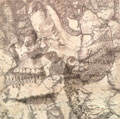 When Piano Magic starts singing about libraries, things are right in the universe once again. By a similar axiom, a good Piano Magic album is marked by its invocation of libraries in one or more songs. Thus, the "The Tollbooth Martrys," the seventh song on The Troubled Sleep Of Piano Magic, is evidence that Magic has produced another splendidly ethereal album. This wasn't the case with the previous album, Writers Without Homes, which was noticeably devoid of libraries.Green UFOs
When Piano Magic starts singing about libraries, things are right in the universe once again. By a similar axiom, a good Piano Magic album is marked by its invocation of libraries in one or more songs. Thus, the "The Tollbooth Martrys," the seventh song on The Troubled Sleep Of Piano Magic, is evidence that Magic has produced another splendidly ethereal album. This wasn't the case with the previous album, Writers Without Homes, which was noticeably devoid of libraries.Green UFOs
There are very certain elements which work for Piano Magic: sounds of desolation; wind-swept soundscapes; eye-blisteringly good artwork; female vocals of approximate age eight which expound on libraries; eccentric post-studio sounds, some of which sound like electronic birds, others of which sound like electronic mauls and hacksaws. What happened during the thankfully brief and innocuous flirtation with the 4AD label (the band has moved on to the Spanish label Green UFOs) was that the band eschewed and disregarded these elements. The cover art (once a beauty equaling and sometimes surpassing the music itself) became the generic "new" 4AD look, which plagues all their recent releases; the music became far more baroque and populated by more and more instruments; it was filled out (in other words, less desolation and isolation) to the point where it approached post-rock jam band; the vocals became burdensome instead of bolstering. But now, Piano Magic have found a way to reconcile some of the old elements with the new. "Saint Marie" starts off this new album humbly enough: a tremulous guitar line syncopated by frontman Glen Johnson's hushed vocals. Soon, though, a pulsing stereo of guitars rises and falls alternately, which itself is then punctuated by fast programmed beats of a drum machine. It's an engrossing and compelling sound that persists for the better part of four and a half minutes. It doesn't change much, but it doesn't need to. And this is precisely what used to make Piano Magic magic: the ability to make the sustained repetition of a created sound utterly compelling. Indeed, there are some moments which feel like sloppy seconds from the 4AD affair, but they are mediated by stronger songwriting and a moodier atmosphere. "Speed the Road, Rush the Lights," the weakest song on the album, could be a vestige of Writers Without Homes, and yet I can sense the band turning away from a song like this throughout the rest of the album, which thereby makes this song more palatable. Another illustrative track is "The Teacher's Son," which contrasts the old and new sound of Piano Magic perfectly. For the first minute of the song, there is a spare and lovely guitar line with Johnson's vocals amidst it. An old Piano Magic song could have maintained this sound for five minutes without tiring or growing tedious. But at about 1:15 into the song, the other instruments (bass and percussion, not of the electronic sort) crash in. During the brief 4AD period, the song would have been irreparably marred by these instruments. Yet the ensemble makes it work in this case, and I suspect it has to do with the stronger song-writing. Curiously, Piano Magic has retrieved most of its gothic gloom and beauty ever since its divorce from 4AD, though one might have thought it would have surely increased threefold in that marriage. In any case, it's good to see the band has rediscovered its eloquence for libraries and the sound of desolation, and I can only hope the next album will reintroduce the electronic birds I once adored so much. 
Read More

